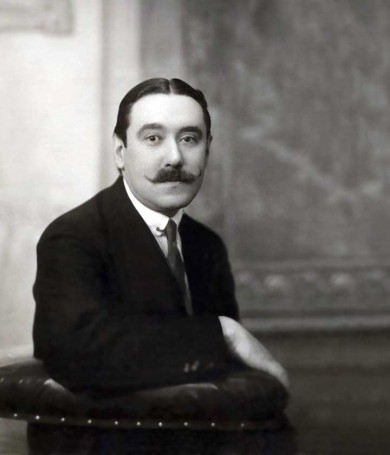South Beach Chamber Ensemble serves up two contrasted rarities

Joaquin Turina's Piano Quartet in A minor was performed Thursday night by the South Beach Chamber Ensemble.
The South Beach Chamber Ensemble presents innovative programs, offering contemporary works and rarities from the past. A sparse crowd took the opportunity to hear scores by Franz Limmer and Joaquin Turina Thursday night at the Coral Gables Museum, yet, despite some uneven playing, the program was a fascinating look at the byways of music history.
Franz Limmer was active in Viennese musical circles in the years between Beethoven and Brahms. His Grand Quintuor is the work of an ambitious composer in his late twenties. Scored for the unusual combination of piano, violin, viola, cello and double bass, the score’s strongest writing comes in the middle movements of this four-part work. The Scherzo effervescently spells Viennese charm while boldly romantic Chopinesque keyboard figurations dominate the Adagio. An opening Allegro con energico lasts almost twenty minutes, striking a note of gravitas and severity. Surprisingly the finale sounds more like a lightweight scherzo than a concluding flourish but benefits from a sophisticated interweaving of thematic threads between the players.
As with many contemporaries of Beethoven or Mozart, the problem with Limmer’s score is its unimaginative, formulaic development. Like the symphonies of Louis Spohr, some lovely themes appear, then become the basis for uninspired modulations, never reaching a point of creative distinction. The piano line often dominates the score and provides its brightest moments.
The New World Symphony’s Michael Linville was a tower of strength at the keyboard, easily encompassing Limmer’s boldly rhetorical proclamations and moments of songful contrast. He proved the fulcrum that held the performance together. The piano sounded metallic and harsh in the museum’s spare auditorium. Janet Clippard brought rhythmic urgency and authoritative command to the remarkably ornate bass part. Violinist Luis Fernandez’s playing was sometimes scrappy and tentative, particularly in the crucial outer movements. Violist Rafael Ramirez and cellist Michael Andrews, the ensemble’s founder, capably handled the concertante writing of the finale.
Turina’s Piano Quartet in A minor proved a rarely heard gem. While he never achieved the renown of Manuel de Falla, Turina was a composer and pedagogue who skillfully navigated the musical crosscurrents of his time. Best known for short pieces like La Oracion del Torero, Turina combined native Andalusian influences with the misty impressionism of Debussy and Ravel and tedgy harmonic palette of Stravinsky. All of these influences come to the fore in the piano quartet; yet the work speaks in an original compositional voice, the influences subsumed by the composer’s own creative spark.
The languid Latin ambience of the initial Lento is mixed with haunting melodies and rhapsodic, bravura keyboard strophes worthy of Rachmaninoff. The central, incisive Vivo is a rhythmically vibrant Spanish dance, the piano figurations coming at lightning pace. An emotionally volatile Andante concludes the work on an unusually contemplative note, the string writing rich and prominent. Turina’s score is filled with wonderful melodies and cogent invention, never outstaying its welcome.
With Tony Seepersad bringing crisp, well articulated bite to the violin part, the performance was more strongly cohesive than was the case with the Limmer work. Pianist Ciro Fodere, a former New World Symphony player, strongly accentuated the work’s indigenous Latin elements. Virtuosic and agile, Fodere’s playing astutely combined power pounding riffs with subtle tonal coloring. Ramirez and Andrews gave tonal warmth and vibrancy to Turina’s darkly sonorous scoring for the lower strings.
The South Beach Chamber Ensemble repeats the program 6 p.m. Sunday at Miami Beach Botanical Gardens and 7:30 p.m. Tuesday at Barry University’s Andy Gato Gallery in Miami Shores. 305-673-2183 www.sobechamberensemble.org.
Posted in Performances
Leave a Comment
Fri Jan 27, 2012
at 11:21 am
No Comments